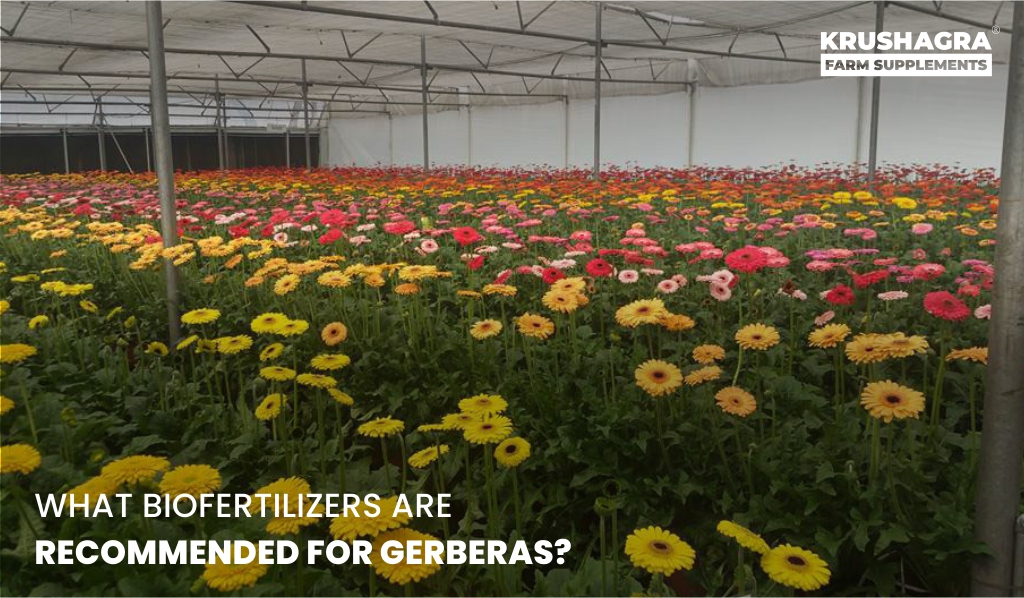Gerberas, known for their vibrant blooms and long-lasting flowers, are popular in both commercial and home gardens. To cultivate healthy gerbera plants, providing the right nutrition is crucial.
Biofertilizers, being eco-friendly and sustainable, have emerged as a preferred choice for enhancing plant growth. This comprehensive guide explores the best biofertilizers recommended for gerberas and how to apply them for optimal results.
Understanding Biofertilizers
Biofertilizers are living microorganisms that enhance soil fertility and promote plant growth by fixing atmospheric nitrogen, solubilizing phosphorus, and stimulating plant hormone production. They reduce the dependency on chemical fertilizers and improve the ecological balance of the soil.
Why Gerberas Need Special Care
Gerberas are prized for their bright, colorful blooms that add beauty to gardens, landscapes, and floral arrangements. However, growing healthy gerbera plants requires special care due to their specific environmental, nutritional, and maintenance needs.
Understanding these requirements is essential for ensuring continuous flowering and long-lasting plant health.
One key reason gerberas need special care is their sensitivity to environmental conditions. They thrive in moderate climates with temperatures between 15-25°C (59-77°F).
Extreme heat or frost can damage the plants, while insufficient sunlight leads to weak stems and reduced blooming. Gerberas also require well-draining soil, as waterlogged conditions cause root rot, one of the most common issues affecting these plants.
Nutritional balance is another critical factor. Gerberas are heavy feeders that need a steady supply of essential nutrients like nitrogen, phosphorus, potassium, and trace elements such as magnesium and iron.
Regular fertilization with organic or biofertilizers helps maintain healthy foliage and vibrant blooms.
Pest and disease management is equally important. Gerberas are prone to fungal infections, aphids, whiteflies, and spider mites. Implementing integrated pest management (IPM) strategies, including regular inspections, maintaining proper spacing, and applying natural pest repellents, keeps the plants healthy.
Proper maintenance practices like deadheading spent flowers, pruning yellow leaves, and keeping the soil evenly moist but not soggy further contribute to the plant’s overall well-being.
With the right care, gerberas can bloom profusely and remain a stunning centerpiece in gardens or homes year-round. Providing consistent attention ensures they reach their full potential and continue to brighten up any space with their cheerful blooms.
Why Use Biofertilizers for Gerberas?
Gerberas require a nutrient-rich growing medium with good aeration, water retention, and adequate organic matter. Biofertilizers help achieve these conditions by:
- Improving Nutrient Availability: Biofertilizers unlock essential nutrients like nitrogen, phosphorus, and potassium.
- Enhancing Root Development: They encourage root growth through the production of natural growth hormones.
- Boosting Disease Resistance: Some biofertilizers help suppress soil-borne diseases by promoting beneficial microbial activity.
- Sustainability: Biofertilizers are environmentally friendly and reduce chemical fertilizer use.
Recommended Biofertilizers for Gerberas
- Nitrogen-Fixing Biofertilizers
Nitrogen is crucial for healthy foliage and overall plant vigor. Consider these options:
- Rhizobium: Effective in legume-based intercropping systems.
- Azospirillum: Promotes nitrogen fixation and root development.
- Azotobacter: Suitable for non-leguminous plants like gerberas, enhancing nitrogen uptake and overall growth.
- Phosphate-Solubilizing Biofertilizers
Phosphorus supports root development and flower production. Useful phosphate-solubilizing biofertilizers include:
- Bacillus megaterium: Solubilizes inorganic phosphorus, making it available to plants.
- Pseudomonas fluorescens: Enhances root growth and resistance against pathogens.
- Potassium-Mobilizing Biofertilizers
Potassium improves flower quality and resistance to stress. Use:
Frateuria aurantia: Known for mobilizing potassium from the soil, boosting flowering and fruiting.
- Microbial Consortia
Microbial consortia are mixtures of beneficial microorganisms. They offer a broad-spectrum approach to improving soil health and plant growth.
- Mycorrhizal Fungi (AMF – Arbuscular Mycorrhizal Fungi)
- Glomus spp.: Mycorrhizal fungi form symbiotic relationships with plant roots, enhancing nutrient and water absorption while improving resistance to environmental stresses.
- Plant Growth-Promoting Rhizobacteria (PGPR)
- Pseudomonas spp. and Bacillus spp.: These bacteria produce growth hormones, suppress diseases, and enhance nutrient uptake.
Application Methods for Biofertilizers
To ensure effective application, follow these steps:
- Seed Treatment: Mix biofertilizers with water and apply to gerbera seeds before planting. Allow seeds to dry in the shade before sowing.
- Root Dipping: For transplants, dip roots in a biofertilizer suspension before planting.
- Soil Application: Mix biofertilizers into compost or organic manure and apply around the root zone during planting or top-dressing.
- Foliar Spray: Dilute biofertilizers in water and spray directly on leaves for quick nutrient absorption.
Best Practices for Using Biofertilizers
- Right Environment: Ensure suitable temperature, moisture, and pH levels (5.5-7.0) for effective microbial activity.
- Avoid Chemicals: Do not mix biofertilizers with chemical fertilizers or pesticides.
- Use Fresh Products: Biofertilizers should be fresh and stored correctly to maintain viability.
- Regular Application: Apply biofertilizers periodically for sustained benefits.
Advantages of Using Biofertilizers for Gerberas
- Eco-Friendly: Minimizes environmental pollution and soil degradation.
- Cost-Effective: Reduces expenditure on chemical fertilizers.
- Sustainability: Promotes long-term soil fertility and plant health.
- Disease Resistance: Suppresses pathogens naturally through beneficial microbial competition.
Challenges and Precautions
While biofertilizers offer numerous benefits, consider the following challenges:
- Storage Issues: Biofertilizers are sensitive to temperature and light.
- Delayed Results: Effects may take time compared to chemical fertilizers.
- Proper Handling: Incorrect application can reduce effectiveness.
Conclusion
Using biofertilizers for gerberas is a sustainable and effective way to enhance plant growth, improve soil health, and reduce reliance on synthetic fertilizers.
By selecting the right biofertilizers and applying them correctly, gardeners can achieve vibrant, long-lasting blooms while maintaining an eco-friendly cultivation approach. Embrace biofertilizers and watch your gerberas thrive like never before!
FAQs
1. How often should I test my soil when growing grapes?
It’s recommended to test your soil annually or at least every 2-3 years to monitor nutrient levels, pH balance, and overall soil health.
2. Can I grow grapes in clay soil?
While grapes prefer well-draining loam or sandy loam soil, you can improve clay soil by adding organic matter like compost and creating raised beds to enhance drainage.
3. What organic materials are best for improving grapevine soil?
Compost, aged manure, leaf mold, and cover crops like clover and vetch are excellent organic materials that enrich the soil and boost fertility.
4. How do I know if my grapevines are nutrient deficient?
Common signs of nutrient deficiencies include yellowing leaves, stunted growth, poor fruit development, and reduced vine vigor. Conduct a soil test to diagnose the issue accurately.
5. When is the best time to apply soil amendments for grapes?
Apply soil amendments in early spring before new growth begins or in late fall after harvest. This timing allows nutrients to integrate into the soil effectively.






